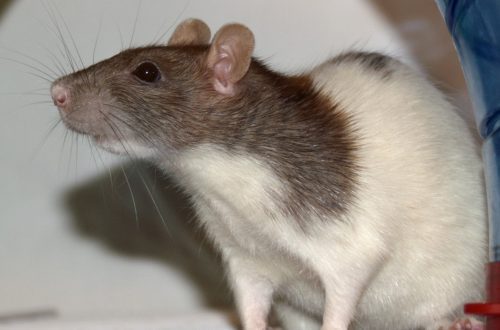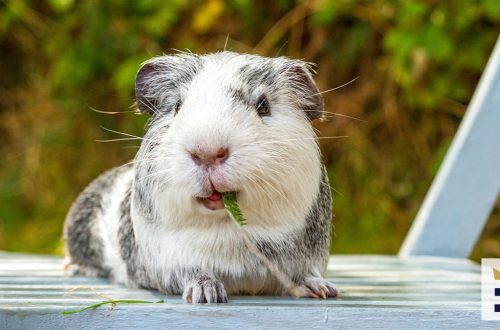
Walking ball for a hamster: purpose, selection and use (photo)

Domestic hamsters spend most of their lives in a cage, but motor activity is very important for them, so the baby needs to be let out for a walk. A walking ball for a hamster is what you need so that the baby does not get lost. A hamster is a real fidget, in the wild it is able to run tens of kilometers in a day. Yes, even in a cage, the baby runs through tunnels and hills, goes around “his possessions” several times, spins the wheel, winding kilometers. Energy is a necessary component of the life of these nimble animals. Running in a ball is more interesting and more difficult than in a wheel – the baby will get tired faster and will sleep sweetly in the nest.
Contents
What is the ball for?
Almost all rodents have a wheel, but it cannot fully cope with an excess of energy. A ball for a hamster is not an easy fashion accessory, it is needed so that the hamster can easily start traveling around the apartment.
Principle of operation: the hamster is placed inside, the door is closed. The animal runs and rolls the ball.
A hamster ball is a transparent or translucent sphere with a round hole so that the rodent can go inside. The round hole is closed by a door of the same shape.
Production material – plastic. With the help of this device, the baby can not be limited to the expanses of his native cage, but to explore the rooms of your house with interest. For hamsters, the ball is a good way to take a walk and not get lost.
Advantages
The ball for the hamster allows the baby to safely move around the apartment – the rodent will not fall anywhere, fail, not get hurt, besides, it does not cause damage to the apartment. After all, if you let the baby “free swim”, he can gnaw on wires, things, hide safely and cause other inconveniences.

Not every hamster breeder knows how to teach a hamster to run in a ball, but if you do this, the baby will be able to push the boundaries, exploring not only the fenced areas – a bath, an arena, but your entire home. Many hamsters like to walk in a ball, but for safety reasons, do not leave the baby in it for a long time. All households should know about walks so as not to accidentally step on them.
The main advantage is that the pet will be able to visit all areas of the apartment without damaging the property.
An important issue is cost. The product is available for sale and is inexpensive. Of course, for a ruble you will not find a ball for a Djungarian hamster, but for 150-200 rubles, it’s quite!
Important: walking balls are presented in a large assortment, but you need to choose the one with the most air holes.
Disadvantages
When buying a ball for a hamster, make sure that it is well ventilated. The baby can be held inside for no more than 15 – 20 minutes, otherwise he may suffocate – while running, the walking ball heats up, and little air enters – as a rule, the accessory is equipped with several small holes. There are cases when rodents remained inside the ball for several hours, as a result of which they died. This happened for various reasons, but mainly from overheating and lack of air. During this time, the animal can be overcome by thirst or hunger, but he cannot get out of the “imprisonment” on his own.
A hamster in a ball fulfills its physiological needs, which in the process of running through the ventilation holes scatter around the apartment – you have to tidy up. Another nuance: during operation, the fasteners wear out, so one “beautiful” day the ball for the hamster can simply scatter during a walk and the animal will start free swimming.
How to choose the right accessory?
The size of the ball for hamsters depends on the breed of the rodent: the Syrian hamster needs to buy a larger accessory, the dzungarik needs a smaller one. You can order a ball for hamsters of different sizes, standard diameters:
- 13 cm – a compact walking ball for a dzhungarik;
- 18 cm – universal option;
- 29 and 33 cm are large models, such a ball for a Syrian hamster is perfect.
Consider the size of the pet: if the animal is large, and you get too small a ball for him, the hamster will run with an arched back. But you should not go to extremes either, in an accessory that is too loose, the baby will be thrown to the sides, this will negatively affect his well-being.

On sale there are walking balls for hamsters of different models. Most of the market is occupied by goods in the form of a hollow sphere, which moves freely in any direction, it is set by the animal. But you can find a model with a track that sets the trajectory. This is convenient, because the baby will move along a certain route, and is in the field of view of its owner. Such a walk is the best option that solves the problem of the activity of the animal, and since it is inexpensive, it is also suitable for the owners.
How much a walking ball for hamsters costs depends on the model – give preference to the most transparent accessory with good ventilation so that air can pass freely. The color scheme is up to you. Many people buy transparent ones so that the traveler can see something on his way. Such care is pleasantly surprising, but do not forget that hamsters “see with their mustaches” best of all, their sense of smell works best. It is not necessary to buy an accessory if you know how to craft at least a little – you can make a walking ball for a hamster with your own hands.
How to teach your baby to active walks?
That the kid fell in love with travel, you need to accustom him to a walking ball. Do this gradually, leaving the homa inside for a few minutes, gradually increasing the duration of the procedure. Watch your pet, he should really like “training”, otherwise there is no point in exposing the animal to unnecessary stress.
You can interest the hamster by putting your favorite treat in the ball – a piece of apple or fruit. The rodent will climb inside to eat. Then you need to gently rotate to demonstrate to your pet how this “miracle device” works. Shouting, noise, sudden movements in this case are contraindicated – this will complicate the training process. Such manipulations must be repeated until the baby understands the principle of operation of the accessory.
Important: if the walk of the animal was organized by children, make sure that they remove the animal from the ball in time.
Terms of use:
- Close the door tightly so that the baby does not run away.
- Hamster balls should only roll on the floor. Do not roll on high surfaces, for example, on a table, windowsill – the pet may fall.
- Before letting your pet out for a walk, take care of safety once again: limit access to stairs and other surfaces on which the accessory can roll.
- Remove other animals: cats and dogs walking nearby can scare the baby, and those interested in the “new toy” kick him, roll him in different directions.
- No need to kick balls for hamsters, hamsters must put them into action on their own.
- Only one hamster can walk in one ball at a time.
If you follow the rules, both you and your baby will enjoy such walks. Remember that the main thing is safety. You should not risk leaving a cat and a hamster in the same room, referring to the fact that the ball will save the baby from danger. Syrian and Dzungarian breeds quickly learn to “travel” in such an accessory, and this is a considerable merit of the owners – the acquaintance with the ball happened correctly, security was ensured.
Proper selection and use of a walking ball for a hamster
4.5 (89.61%) 102 votes





